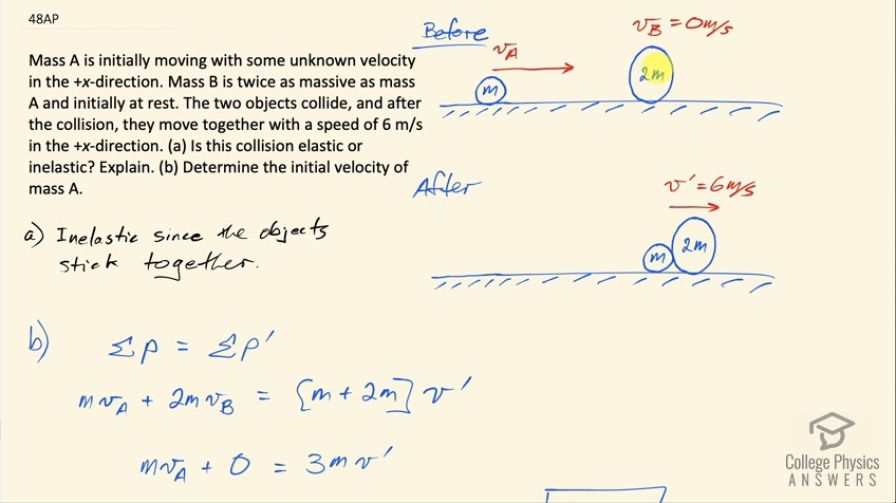Question
Mass A is initially moving with some unknown velocity in the +x-direction. Mass B is twice as massive as mass A and initially at rest. The two objects collide, and after the collision, they move together with a speed of 6 m/s in the +x-direction. (a) Is this collision elastic or inelastic? Explain. (b) Determine the initial velocity of mass A.
Final Answer
- Inelastic since the objects stick together.
Solution video
OpenStax College Physics for AP® Courses, Chapter 8, Problem 48 (Test Prep for AP® Courses)

vote with a rating of
votes with an average rating of
.
Video Transcript
This is College Physics Answers with Shaun Dychko. Before colliding, mass A is moving with some unknown velocity to the right and mass B which is two times the mass of object A has 0 meters per second velocity to begin with—it's initially at rest. After colliding, these objects stick together and move with a velocity of 6 meters per second so v prime represents this velocity that this object has after collision and it's 6 meters per second. Is this collision elastic or inelastic? Well, it is inelastic since the objects stick together and part (b) asks determine the initial velocity of object A. So we know the total momentum initially equals the total momentum after collision and we substitute mv A plus 2mv B for the total initial momentum and that's going to equal this mass of this big object which is m plus 2m times v prime; v B is 0 because mass B is initially at rest and we can divide both sides by m here and then we have v A is 3v prime which is 3 times 6 meters per second, which is 18 meters per second.